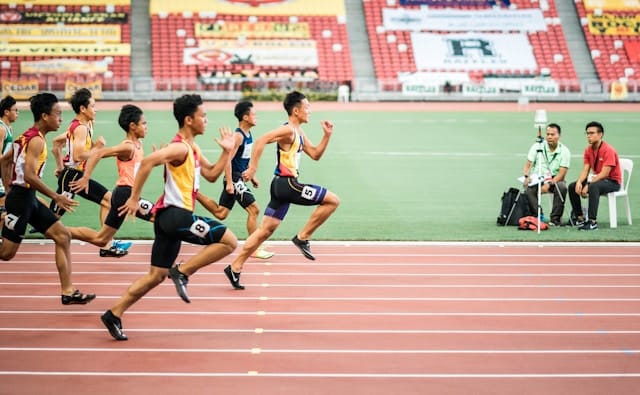The field of sports science continues to evolve and innovate. New methods and techniques are always being developed to boost performance, improve efficiency and prevent injuries. One such technique that has gained considerable traction in recent years is dynamic neuromuscular stabilization (DNS). This approach to training and rehabilitation is proving to be transformative in improving athletic performance. But how does it do that? What are the underlying principles and benefits of DNS, and how can athletes incorporate it into their routines?
Today, we delve into the world of dynamic neuromuscular stabilization and explore its potential for enhancing athletic performance.
Sujet a lire : How to Tailor Strength and Conditioning Programs for Female Rugby Players?
The Basics of Dynamic Neuromuscular Stabilization
Before we get into the specifics of how DNS can improve athletic performance, let’s first understand what it involves. Dynamic neuromuscular stabilization is a form of rehabilitation therapy originating from the Czech Republic. It’s based on the premise that our movements as babies and toddlers, which were instinctive and natural, are the best form of movement.
The DNS approach involves retraining the body to move in this instinctive, natural way. It’s all about utilizing the body’s innate movement patterns that we were born with, which are often lost as we grow and adapt to specific lifestyle or sports demands.
Cela peut vous intéresser : What Techniques Can Enhance Mental Toughness in Competitive Swimmers?
The Role of DNS in Enhancing Athletic Performance
Now, let’s turn our attention to how dynamic neuromuscular stabilization can revolutionize athletic performance.
Improved Movement Efficiency
Efficient movement is a cornerstone of athletic performance. DNS works to improve this efficiency by retraining the body to move in more natural, instinctive ways. This leads to a significant reduction in energy expenditure during movement, allowing athletes to perform at peak levels for longer periods.
Injury Prevention
Injuries are an athlete’s worst nightmare. Unfortunately, they’re often the result of improper movement patterns. DNS focuses on correcting these patterns, thus significantly reducing the risk of sports-related injuries.
Enhanced Strength and Power
By improving neuromuscular coordination, DNS can help athletes unlock greater strength and power. This is because efficient movement patterns allow for better force generation and transfer throughout the body.
Integrating DNS into Training Routines
You might be wondering, "So, how can I incorporate DNS into my training regimen?" Let’s explore this further.
The first step towards integrating DNS into your training routine is to consult a professional who is trained in this approach. They can assess your current movement patterns and identify areas for improvement.
From there, they can devise a personalized DNS program for you. This might involve a series of exercises designed to retrain your body to move more naturally and efficiently. These exercises may seem unfamiliar and challenging at first – after all, you’re effectively unlearning years of ingrained movement patterns. However, with consistent practice, they can lead to significant improvements in performance.
The Future of DNS and Athletic Performance
The benefits of dynamic neuromuscular stabilization for athletic performance are clear, but the future looks even brighter. As more research is conducted into this approach, we can expect to see even more sophisticated DNS techniques being developed, tailored to the specific demands of different sports.
The potential of dynamic neuromuscular stabilization to transform athletic performance is immense. Whether you’re an elite athlete or a weekend warrior, DNS is a powerful tool that can help you perform at your best, avoid injuries, and enjoy your sport to the fullest.
Remember, every athlete is unique – what works for one person might not work for another. However, the principles of DNS – efficient movement, injury prevention, and improved neuromuscular coordination – are universal. By understanding and applying these principles, athletes everywhere can reap the benefits of this innovative approach to training and rehabilitation.
Although it might require some initial effort and patience, the rewards of dynamic neuromuscular stabilization are well worth it. As the saying goes, "The best things in life are worth waiting for." In this case, the ‘best thing’ could be a significant boost to your athletic performance.
In the world of sports, every little advantage counts. Don’t let the opportunity to improve pass you by – consider dynamic neuromuscular stabilization today. It could be the game-changer you’ve been looking for.
DNS and Different Sports: A Tailored Approach
Dynamic neuromuscular stabilization is not a one-size-fits-all approach. What makes it particularly effective is the potential for customization depending on the athlete’s needs and the specific demands of different sports.
For instance, a football player might need a DNS program that focuses on enhancing explosive power and agility, while a long-distance runner might benefit from a program that emphasizes endurance and efficient energy transfer. Similarly, a swimmer might need to work on improving their coordination and range of motion, while a dancer might benefit from a program that enhances balance and flexibility.
This is where a trained DNS professional comes in. By analyzing an athlete’s current movement patterns and understanding the specific demands of their sport, they can devise an individualized DNS program. This program will consist of targeted exercises designed to correct improper movement patterns and enhance the athlete’s performance in their particular sport.
As athletes progress with their DNS training, they might notice changes not just in their performance but also in their body awareness. They become more attuned to how their body moves and functions, allowing them to make fine adjustments that can make a big difference in their performance.
In the field of sports, where even the smallest margin can determine the difference between winning and losing, this level of body awareness can be a game-changer.
Conclusion: The Power of Dynamic Neuromuscular Stabilization
In conclusion, dynamic neuromuscular stabilization offers a promising avenue for enhancing athletic performance. By tapping into the body’s natural, instinctive movement patterns, DNS can help athletes move more efficiently, prevent injuries, and unlock greater strength and power.
The potential of DNS does not end there, though. With the possibility of tailoring the approach to specific sports and individual needs of athletes, the benefits of DNS are vast and varied. No matter what sport you participate in, DNS can be a powerful tool to help you perform at your best and achieve your athletic goals.
While the transformation brought by DNS may not happen overnight, the rewards are well worth the patience and effort. As more and more athletes and sports professionals adopt DNS, we can expect to see continued advancements in this field.
The future of dynamic neuromuscular stabilization in sports science is bright. So, consider incorporating DNS into your training regimen today. It might just be the edge you need to excel in your sport. After all, in the competitive world of sports, every little advantage counts.










